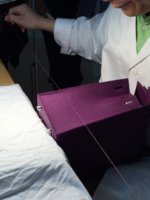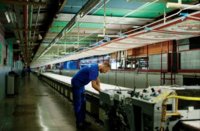From the my opinion of Hermes is changing thread a video showing use of a machine 32 sec. mark
Jmo
I think every crafts person is taught to make every part of a bag stitching by hand. The skill. I there is less stitching by hand now. Think about how many bags are sold a day all over the world compared to number of craftspeople making them.
Jmo
I think every crafts person is taught to make every part of a bag stitching by hand. The skill. I there is less stitching by hand now. Think about how many bags are sold a day all over the world compared to number of craftspeople making them.






